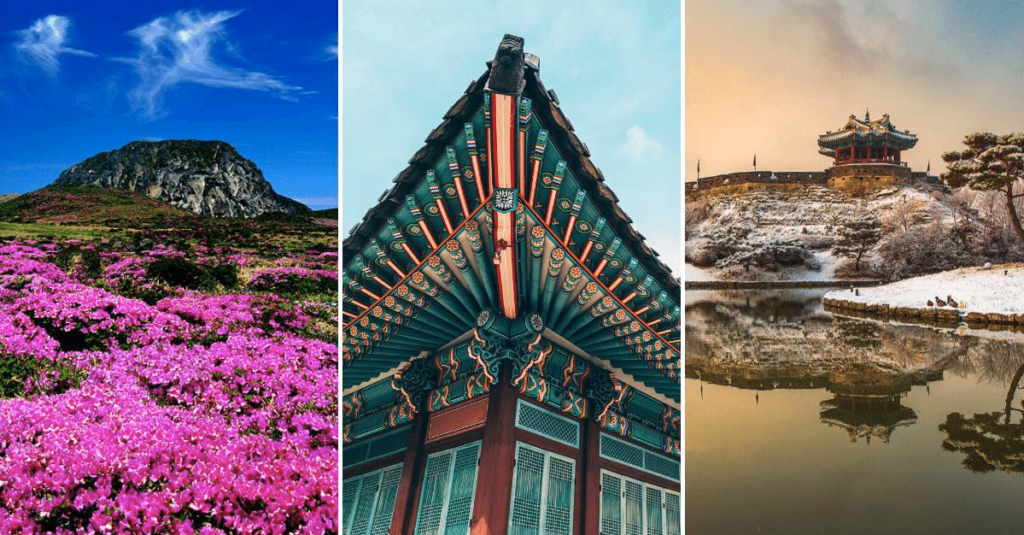Friends, I’m going to be 100% honest with you. Until a few years ago, I had never heard of UNESCO World Heritage Sites. And if I could go several decades without knowing what they are, or how they get that designation, I’m willing to bet there are a few of you out there who don’t know what they are, either. So here’s a teaching moment.
UNESCO’s Constitution was adopted in London in 1945 and it entered into force in 1946. Their first “job,” was to save multiple sites in Egypt and Sudan that were going to be overrun by water, thanks to a dam project (that’s how, among other historical landmarks that were relocated to places around the world, the Temple of Dendur wound up at the Metropolitan Museum of Art). Their World Heritage Sites began being named in 1972. But it somehow wasn’t until 2015 that I even heard of the moniker.
Y’see, we were planning our March 2016 trip to Cuba and figuring out where we wanted to go and what we wanted to see. Havana was a given. But everything else was fair game. While we were researching, I kept coming across places and towns listed as UNESCO Heritage Sites. Old Havana. Trinidad. Cienfuegos. Others, too.
I didn’t want to look dumb, so I didn’t ask what having that designation actually MEANT. And for someone who is the self-proclaimed “queen of the Google,” I also didn’t look it up (talk about DUMB, LOL). I just figured they were famous historical sites and how bad could that be? So we wound up seeing all 3 that I mentioned.
By the way, y’all, Cuba was amazeballs. If there’s ever a time when it’s relatively easy to get there again, do it. And go see a dinner show at the Tropicana…hello, 1950s kitsch in all its glory! I really expected to see Ricky Ricardo come on stage and sing Babalu at any second!
But I digress.
Fast forward a few years and I saw earlier this month that UNESCO was considering adding Venice to its list of World Heritage sites that were in danger (the island city faces simultaneous threats from climate change, mass tourism and rapid urban development).
Meanwhile, I had STILL never researched what a UNESCO World Heritage site was. It was time to change that.
TL/DR
“A World Heritage Site is a landmark or area with legal protection by an international convention administered by the United Nations Educational, Scientific and Cultural Organization. World Heritage Sites are designated by UNESCO for having cultural, historical, scientific or other forms of significance.” (thanks, Wikipedia!)
More info about UNESCO World Heritage Sites
What’s UNESCO?
UNESCO stands for United Nations Educational, Scientific and Cultural Organization.
“After two World Wars in less than thirty years, UNESCO was born of a clear vision: to achieve lasting peace, economic and political agreements among States are not enough. We must bring people together and strengthen the intellectual and moral solidarity of humankind, through mutual understanding and dialogue between cultures.”
Their goal and mission
Their goal is, “to encourage the identification, protection and preservation of cultural and natural heritage around the world considered to be of outstanding value to humanity.”
Their mission is to:
- Encourage countries to sign the World Heritage Convention and to ensure the protection of their natural and cultural heritage;
- Encourage States Parties to the Convention to nominate sites within their national territory for inclusion on the World Heritage List;
- Encourage States Parties to establish management plans and set up reporting systems on the state of conservation of their World Heritage sites;
- Help States Parties safeguard World Heritage properties by providing technical assistance and professional training;
- Provide emergency assistance for World Heritage sites in immediate danger;
- Support States Parties’ public awareness-building activities for World Heritage conservation;
- Encourage participation of the local population in the preservation of their cultural and natural heritage;
- Encourage international cooperation in the conservation of our world’s cultural and natural heritage.
What’s on the list?
There are currently 1157 properties listed as UNESCO World Heritage sites that are located in 167 countries. 900 of them are cultural, 218 are natural, and 39 are mixed.
Italy currently has the most sites, with 58 selected areas. China has the second most number of sites, with 56 of them. Germany is #3, with 51 designated sites.
The United States is home to 24 UNESCO World Heritage sites:
- Mesa Verde National Park
- Yellowstone National Park
- Everglades National Park
- Grand Canyon National Park
- Independence Hall
- Kluane / Wrangell-St. Elias / Glacier Bay / Tatshenshini-Alsek # * 34
- Redwood National and State Parks
- Mammoth Cave National Park
- Olympic National Park
- Cahokia Mounds State Historic Site
- Great Smoky Mountains National Park
- La Fortaleza and San Juan National Historic Site in Puerto Rico
- Statue of Liberty
- Yosemite National Park #
- Chaco Culture
- Hawaii Volcanoes National Park #
- Monticello and the University of Virginia in Charlottesville
- Taos Pueblo
- Carlsbad Caverns National Park
- Waterton Glacier International Peace Park *
- Papahānaumokuākea
- Monumental Earthworks of Poverty Point
- San Antonio Missions
- The 20th-Century Architecture of Frank Lloyd Wright
There have also been 3 sites that, over the years have been delisted as UNESCO World Heritage sites.
How do places go on the list?
It’s done by a nomination and selection process.
A country has to identify its significant cultural and natural sites in a document known as the Tentative List (there are a bunch of rules for a site to even be nominated). A site must meet at least one of ten criteria in order to be considered :
Criteria for Cultural inclusion:
- “To represent a masterpiece of human creative genius”
- “To exhibit an important interchange of human values, over a span of time or within a cultural area of the world, on developments in architecture or technology, monumental arts, town-planning or landscape design”
- “To bear a unique or at least exceptional testimony to a cultural tradition or to a civilization which is living, or which has disappeared”
- “To be an outstanding example of a type of building, architectural or technological ensemble or landscape which illustrates (a) significant stage(s) in human history”
- “To be an outstanding example of a traditional human settlement, land-use, or sea-use which is representative of a culture (or cultures), or human interaction with the environment especially when it has become vulnerable under the impact of irreversible change”
- “To be directly or tangibly associated with events or living traditions, with ideas, or with beliefs, with artistic and literary works of outstanding universal significance”
Criteria for Natural inclusion:
- To contain superlative natural phenomena or areas of exceptional natural beauty and aesthetic importance”
- “To be outstanding examples representing major stages of earth’s history, including the record of life, significant on-going geological processes in the development of landforms, or significant geomorphic or physiographic features”
- “To be outstanding examples representing significant on-going ecological and biological processes in the evolution and development of terrestrial, fresh water, coastal and marine ecosystems and communities of plants and animals”
- “To contain the most important and significant natural habitats for in-situ conservation of biological diversity, including those containing threatened species of outstanding universal value from the point of view of science or conservation”
Once criteria for consideration has been ensured, recommendations of designation for the sites are made to the World Heritage Committee. The Committee meets once a year to determine what nominated properties to add to the World Heritage List. However sometimes the Committee defers its decision or requests more information from the country that nominated the site.
So there ya go. UNESCO World Heritage sites are places that have been designated as having “outstanding universal value” under the Convention Concerning the Protection of the World Cultural and Natural Heritage. It’s a way to preserve the history of cultural and natural items around the world.
More information about UNESCO World Heritage Convention and their world towards this preservation can be found on their website.
And thank you for coming to my TED talk!
Want to comment on this post? Great! Read this first to help ensure it gets approved.
Want to sponsor a post, write something for Your Mileage May Vary, or put ads on our site? Click here for more info.
Like this post? Please share it! We have plenty more just like it and would love it if you decided to hang around and sign up to get emailed notifications of when we post.
Whether you’ve read our articles before or this is the first time you’re stopping by, we’re really glad you’re here and hope you come back to visit again!
This post first appeared on Your Mileage May Vary
Join our mailing list to receive the latest news and updates from our team.

